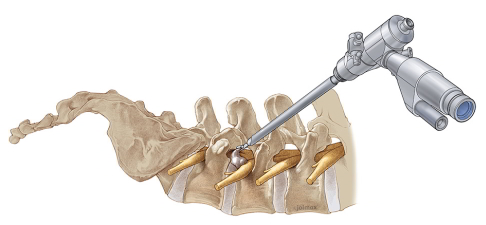My interest in minimally invasive spine surgery started out as a desire to be as precise as possible in the treatment of my patients. Many traditional spinal procedures cut through normal muscle and tissue to get to the source of the problem; this may result in significant pain after surgery. With endoscopic spine surgery, incisions can be as small as 7mm depending on the case. These small incisions minimize damage to normal tissue, which means patients go home shortly after surgery, often with minimal discomfort.
Endoscopy is now available to patients in the Virginia, Maryland, and DC region.
Many of the procedures we perform as spine surgeons are large and complex. While surgery may improve the quality of life of our patients, surgery can do quite a bit of harm as well. There are many patients with MRIs that show significant abnormal findings, but there might be just one level in the spine thats actually causing pain. Patients can sometimes end up getting large spine procedures and sometimes even extensive fusions unnecessarily, when in reality they may do fine simply by targeting the one nerve that’s the cause for the pain. This is where endoscopic spine surgery is effective.
We have used cameras/scopes in many surgical procedures: general surgery (laparoscopy), urology (cystoscopy), orthopaedics (arthroscopy for knees/hips/shoulders, etc). It was only a matter of time that technological advances would also allow us to perform these procedures in the spine as well. Interestingly, endoscopic spine surgery is commonly performed in Asia and Europe, but has only recently gained significant interest in the United States. In the next 3-5 years, I am certain that this will continue to develop and expand in the US and hopefully patients might benefit from these less invasive approaches over the longterm. Its true that endoscopic spine surgery can’t treat everything in the spine, but it does offer our patients a truly minimally invasive option in the treatment of herniated discs and spinal stenosis.
One of the great things about medicine, is that we are constantly trying to figure out ways to perform procedures in a less invasive fashion. This drive towards minimally invasive surgery is patient and surgeon driven. The goal is to address the source of the pain, while doing the least amount of harm in the process.
Usman Zahir, MD




